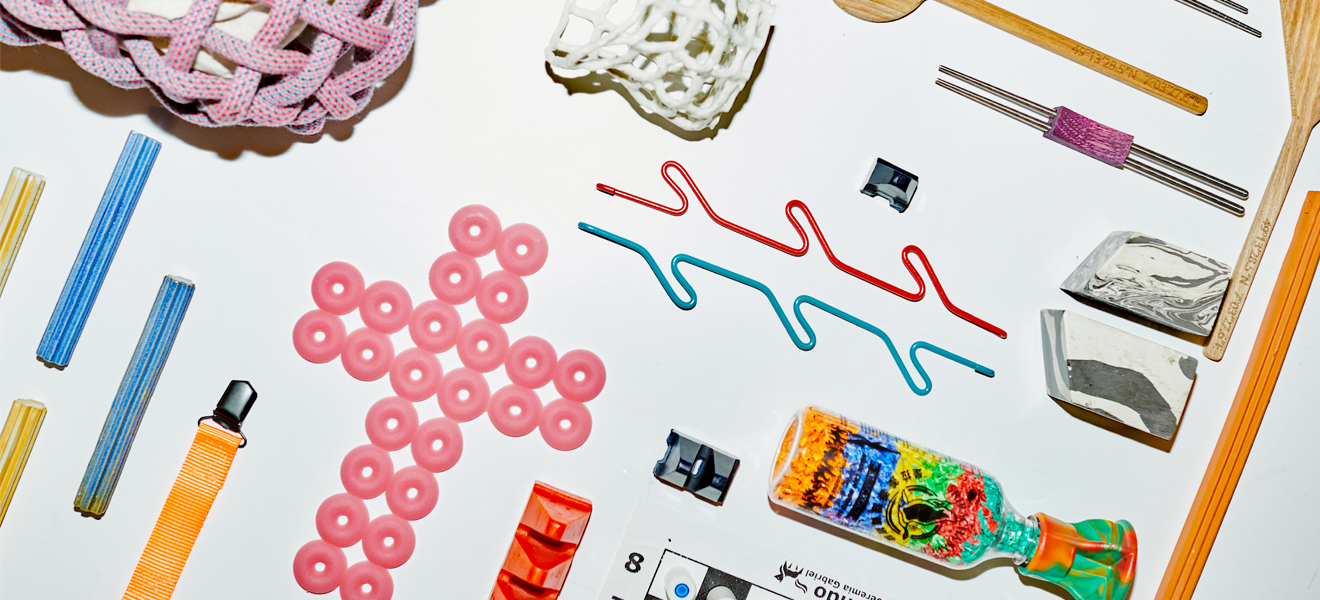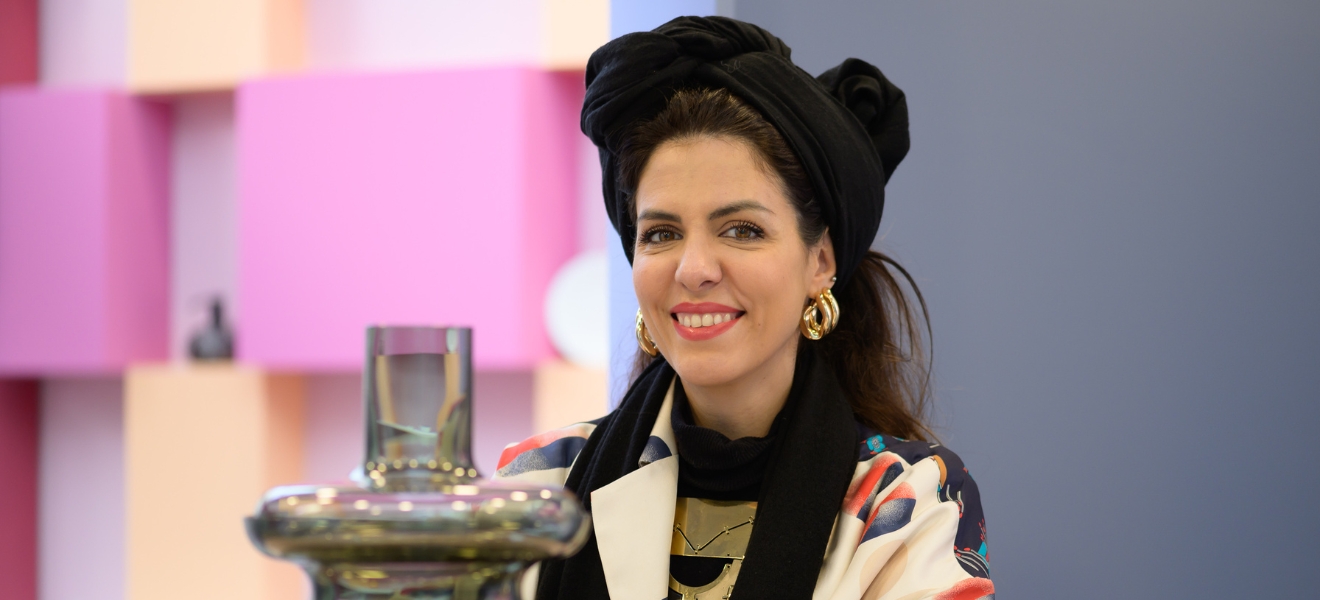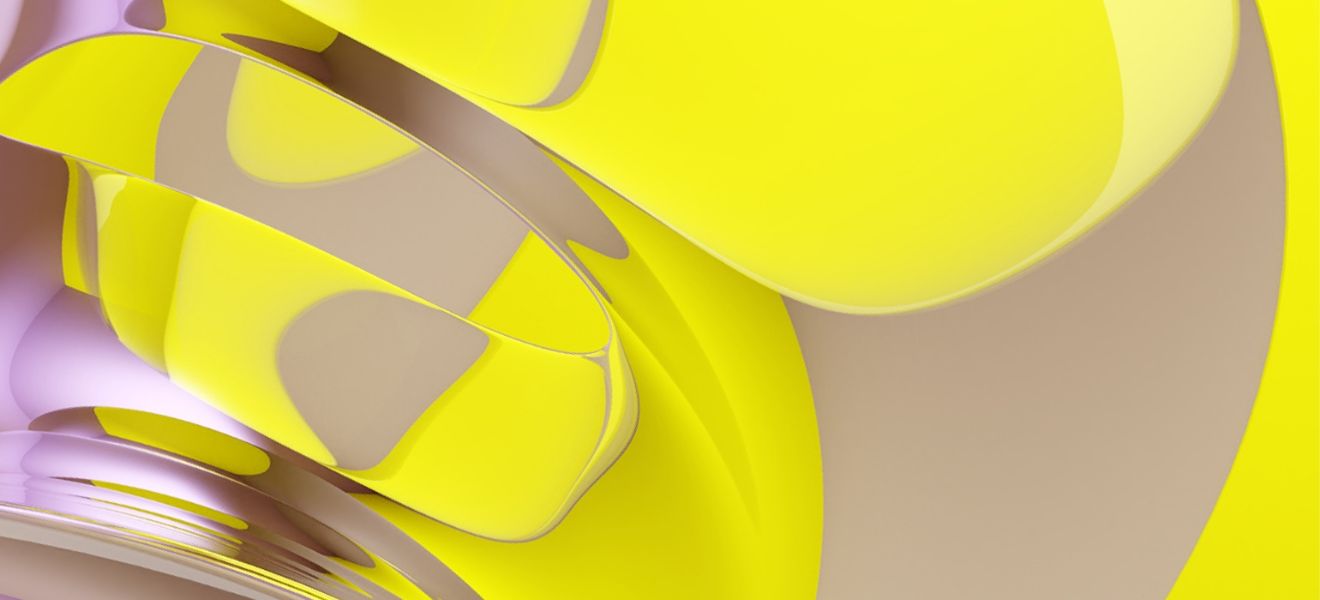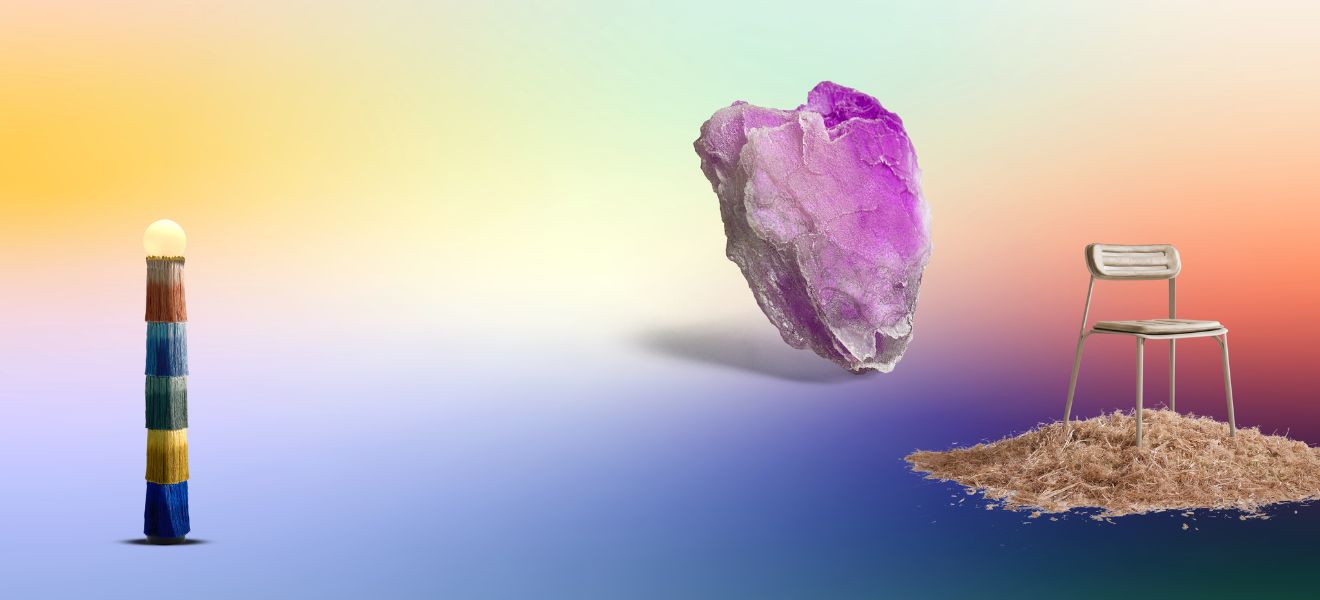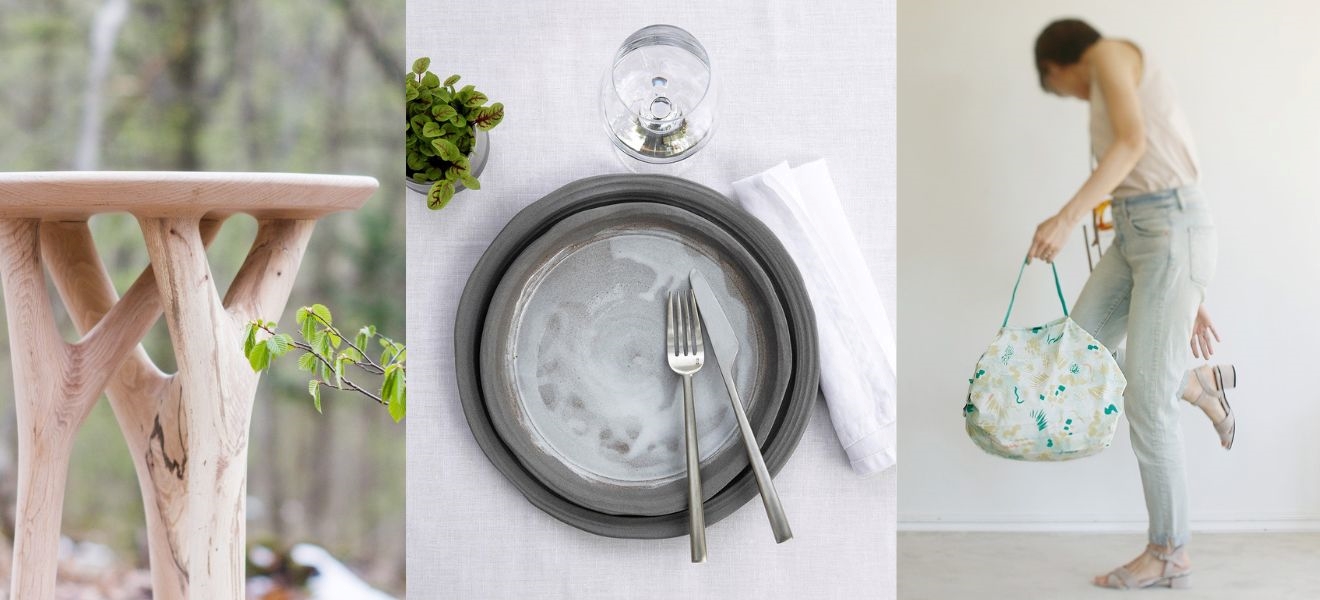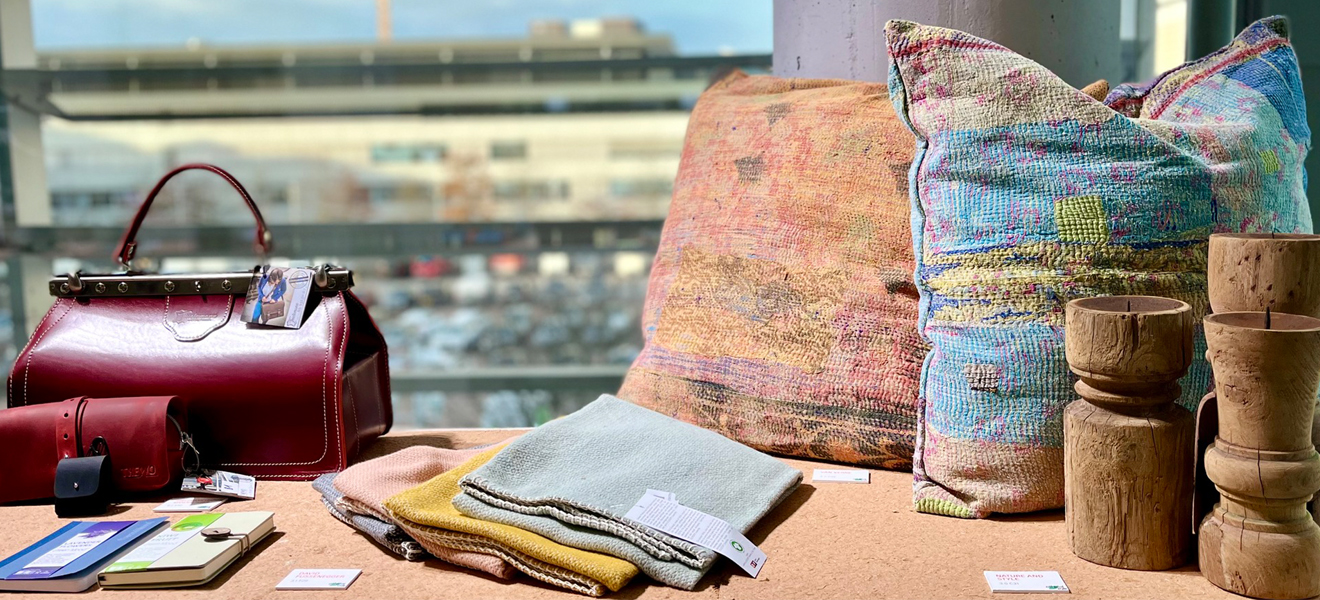How do society, design, art, architecture, and culture respond to the current challenges? And how does this manifest itself in the design of living and working environments? In turbulent times like these, trends show themselves to be particularly groundbreaking. For Ambiente, the trend bureau bora.herke.palmisano has identified three concise themes from the sometimes strongly divergent currents – the Ambiente Trends 23+.
“In turbulent times, how can we strengthen the sense for beauty and the extraordinary, for good design and a pleasant living environment, without blocking out the world?” This was the question that the trend bureau bora.herke.palmisano sent ahead of their trend research. The team of designers found powerful living themes whose answers are quite different. From the desire for the unknown to the soothing power of nature to the passion for design icons.
unknown beauty_strange + gracious
Departure into new spheres: The unexpected, the new and the surprising make their way into our familiar surroundings. Converging techniques, unreal-real forms and surfaces meet an exciting mixed reality aesthetic. The central impulse for this unusual, partly eccentric living theme is the unbridled longing for new and holistic experiences.

1 Depot Boijmans Van Beuningen, Photo Ossip van Duivenbode / 2 Paper Sculpture by Studio Kuniko Maeda, Photo Kuniko Maeda / 3 Paper Sculptures by Studio Kuniko Maeda, Photo Kuniko Maeda / 4 DOME NOMAD by Brokis © Martin Chum / 5 Puffer armchair and footstool by Philippe Malouin for SCP / 6 Fungus series by David Valner Studio, Photo Tereza Valnerova / 7 Dangling Mirror by A+N / 8 GRAPY GREY COTTON by © Gan Rugs / 9 Holographic Drip Earrings by Inna Monastyrna for Jam Inc Jewelry, Photo Inna Monastyrna / 10 Fungus vase by David Valner Studio, Photo Tereza Valnerova / 11 Grotto Console by Chris Schanck, Photo Courtesy of Friedman Benda and Chris Schanck / 12 Puffer armchair by Philippe Malouin for SCP / 13 Morf Sculpture by ferm LIVING / 14 Recovered vases by David Valner Studio, Photo Tereza Valnerova / 15 Oasis pedestal by Lumiere Bricoleur, Photo Jesper Drejer Rundt / 16 Eclipse pedestal by Lumiere Bricoleur, Photo Jesper Drejer Rundt / 17 TAFLA O1 Sapphire Gradient Collection by Zieta Studio / 18 ENOKI METALL by Philipp Mainzer for e15 / 19 Glass sculpture by Stine Bidstrup Studio, Photo Dorte Krogh and Stine Bidstrup / 20 Glass sculpture by Stine Bidstrup Studio, Photo Dorte Krogh and Stine Bidstrup / 21 Grotto Console by Chris Schanck, Photo Courtesy of Friedman Benda and Chris Schanck / 22 t.e. 234 the lucent collection by Carole Baijings Studio for Design in collaboration with Phygital Studios, Photo Thomas Eyck / 23 Manoa by Sebastian Herkner for Zwiesel Glas, Photo Florian Eichinger / 24 Jazz Coupe by Nina Nørgaard, Photo Irina Boersma / 25 Simple Coupe by Nina Nørgaard, Photo Irina Boersma / 26 Beetle Stools by Daan De Wit / 27 BLANKENAU Coffee Table by Lukas Wegwerth, Photo Courtesy of Thomas Joseph Wright Penguins Egg Ltd for Gallery FUMI
In designs that appeal to all the senses, an enchanting, unconventional grace unfolds with surprising new creations. The artistic objects, designs and colours defy conventional categories – and passionately celebrate the beauty of the unknown, the exciting and the fleeting. The Manoa glass series by Sebastian Herkner for Zwiesel Glas (collage 1 / no. 23) conveys this idea. The handcrafted set of carafe and glasses captivates with a flowing form that subtly translates the movement of water into visual and tactile stimuli.


In terms of colour, we encounter a stimulating interplay of intense and extravagant tones with lovely and graceful nuances from Hot Magenta to Mellow Sky. The creative, emphatically experimental handling of the colour is particularly appealing. The shades appear transparent, shimmering and satiny. Rainbow, glossy and wet-look effects fuel the impression of the unreal and make us experience the familiar in a new way. The Blankenau Coffee Table, for example, with its azure blue tabletop, seems out of this world. With its unusual construction, the concept furniture by Lukas Wegwerth moves between art and design (collage 1 / no. 27).
The materials are also used in surprising and unusual ways. The fascinating experiments range from mythical forms and surfaces, such as the Grotto Console by Chris Schanck (collage 1 / no. 21), to extraordinary designs like the glass sculpture by Stine Bidstrup Studio (collage 1 / no. 19). In this context, the play of light and shadow as well as the deliberate dissolution of the boundaries between digital and analogue also gain special significance.
What is real, what is unreal? Is there a difference – and does it still matter at all? unknown beauty_strange + gracious challenges the limits of our imagination with relish. The world of style wants to be surprisingly different and can be presented in a correspondingly unconventional way. Hybrid formats are gaining in importance. They connect the analogue and digital spheres and open up access to new dimensions.

calming nature_careful + pleasant
Conscious, gentle, pleasant: calming nature_careful + pleasant is a contemporary living trend that stands for deep connection and the desire for a new relationship between people and nature. Minimalist living and working atmospheres invite you to take a deep breath and at the same time radiate a pleasant vitality. The biophilic design and the clear, calm language of forms in combination with a pleasant colour palette catch the eye.
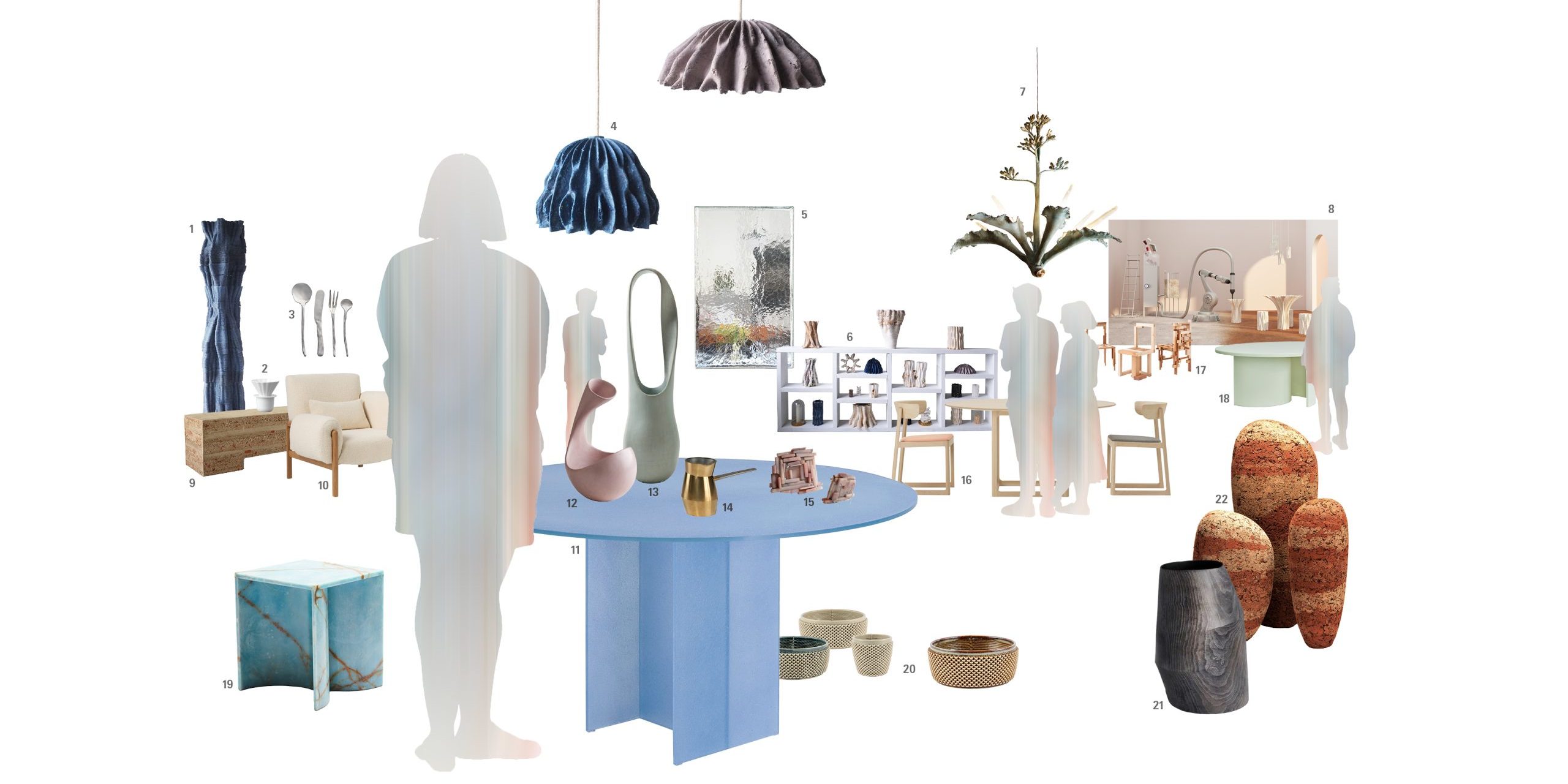
1 Blue Tree by Blast Studio, Photo Blast Studio / 2 CMA CLAY by Cecilie Manz for 1616/arita japan, Photo Jeppe Sørensen / 3 Perfect Imperfection cutlery by Roos Van De Velde for Serax / 4 Petites Coral Lamp by Blast Studio, Photo Blast Studio / 5 Flou Mirror by Ronan & Erwan Bouroullec, Photo Arnaud Maillard Courtesy Galerie kreo / 6 Cabinet of Curiosities by Blast Studio, Photo Blast Studio / 7 Agave Chandelier by Etienne Marc. FAR 22 curated by Studio Vedet and commissioned by Nilufar Gallery, Photo Aurélien Mathis / 8 From used coffee cups to living furniture by Blast Studio, Photo Blast Studio / 9 Banco Taipa by Domingos Tótora, Photo Domingos Tótora / 10 Bruno armchair by Ilse Crawford & Oscar Peña for SCP / 11 SIMOON high table by Patricia Urquiola for Glas italia, Photo Paola Pansini / 12 Coral Toot by Tina Vlassopulos, Photo Mike Abrahams / 13 Turquoise Vessel by Tina Vlassopulos, Photo Mike Abrahams / 14 Mokkakanne by LEONARDS SILBERSCHMIEDE, Photo Beate Leonards / 15 „Verborgen“ Brooch: pink opal, resin, pigment, stainless steel, © 2020 by Julia Obermaier / 16 EN Collection by Cecilie Manz for Maruni. Photo MARUNI, Yoneo Kawabe / 17 leftover synthesis chairs by Simon Gehring Lab, Photo Ingmar Kurth / 18 SOAP Table by Sabine Marcelis, Etage Projects, Photo Pim Top / 19 Farewell to Reason 06 by Nathan Yong Design, Photo Nathan Yong Design / 20 Bowls and Cup by AdditiveCeramics / 21 Oak Vessel 17, 2022 by Konrad Koppold. Courtesy of the LOEWE FOUNDATION / 22 Esculturas Âmago by Domingos Tótora, Photo Domingos Tótora
Impressively, calming nature_careful + pleasant opens up new concepts and perspectives for a conscious approach to our living environment. In a forward-looking symbiosis of art, craft and technology, unusual approaches and solutions for the sustainable use of resources are created. On the one hand, the special focus is on waste materials. Blast Studio, for example, uses its own algorithm to create randomly growing unique objects. The material for the 3D printing process is obtained from urban waste (collage 2 / no. 4). On the other hand, the life cycles of nature provide central inspiration for a nature-like design. Typical are lively-looking materials such as wood or clay, geological-looking patterns and organic forms as can be seen in the sculptures made of recycled material by Domingos Tótora (collage 2 / no. 22).


The sensual experience, the touch & feel, plays an essential role. The surfaces are deliberately kept soft and supple or rough and porous. The resulting hyper-sensual haptics create an intuitive connection with our living environment. In addition, the colour palette has a deeply calming effect. Natural nuances in delicate pigmentation, which appear particularly gentle and pleasant, are the dominant features. calming nature_careful + pleasant inspires with sensitive solutions and ideas for creating pleasant living environments. In addition to living room design, the development of contemporary working environments in particular benefits from the calm and focused design language. Seating furniture and tables concentrate on the essentials. Luminaires with biophilic light lend working environments a natural atmosphere. Dualisms between a modern, technology-driven lifestyle and nature are gently but sustainably dissolved. The delicate, cautious element develops an undreamt-of vitality. Minimalism has rarely been so alive.
lasting ideas_passionate + evocative
Passion for the enduring: Powerful and striking, this bold living trend evokes the ideas of outstanding design icons and condenses them into exciting solutions for the here and now. The pronounced design-historical consciousness specifically directs the gaze forward. Imperishable classics are anchored in the present with relish; familiar concepts are rekindled and creatively interpreted. There are hardly any limits to the freedom of design. Craftsmanship and the manufacturing idea of creating valuable small series and unique pieces are combined with industrial know-how. This is how artistic and avant-garde statements are created that claim a permanent place in our homes and in the world of work. The idea of durability and holistic conception comes to the fore. The focus is on modular approaches, movable objects and versatile, space-saving solutions for living and working. The theme reveals a special dynamic in its ability to adapt iconic design again and again to changing needs, wishes and challenges. This high degree of flexibility forms the basis for lasting validity.

1 PRINCIPLES, a collection by OMA for UniFor, Photo © Delfino Sisto Legnani e Alessandro Saletta – DSL Studio / 2 Signal C1 polychromatic by Barber & Osgerby, Photo Alexandra de Cossette – Courtesy Galerie kreo / 3 Rhombe Color by Lyngby Porcelain / 4 Pendant (stainless steel, enamel) by Christoph Straube, Photo Christoph Straube / 5 Wall Clock by Janua Upcycling Collection, shop.janua.de / 6 DIN Collection by Konstantin Grcic for Mutina, Photo Alessandro Sorci / 7 Detail: VITTI TABLE by Studio Rhonda for made.com / 8 Pendant Lighting Fold by Formafantasma for Maison Matisse, Photo Gianni Antoniali / 9 Hanging Dividers by Re:Felt / 10 DIVIDE IT by Pitsou Kedem for mdf italia, Photo Lorenzo Cappellini Baio / 11 Archibald Anniversary limited Edition 2022 by Poltrona Frau x Felipe Pantone / 12 Bit Stools by Normann Copenhagen / 13 Anorak by Patricia Urquiola for Moroso, Photo Alessandro Paderni / 14 Comma by © Vitra / 15 HÅG TION 2100 by Flokk / 16 CAST AMBER by Kinto / 17 COLLECT Table by Jonas Wagell. Wendelbo, Denmark / 18 Signal R polychromatic by Barber & Osgerby, Photo Alexandra de Cossette – Courtesy Galerie kreo / 19 ‚A Time of Sincerity’ by Dahye Jeong, Courtesy of the LOEWE FOUNDATION / 20 Loza Vase & Pot by Sebastian Herkner for Ames, Photo Andres Valbuena / 21 Buds by Studio Comploj, Photo Studio Riebenbauer / 22 Tape Dispenser on Rusted Stone by new craft house / 23 Vase on Rusted Stone by new craft house / 24 THIERRY by Piero Lissoni for Kartell, Photo Kartell
Materials, shaping and colour design are noticeably aligned with the distinct conceptual design approach. The striking colour palette of lasting ideas_passionate + evocative forms the starting point for designs full of passion and self-confidence. In it, a cool range of petrol and blue nuances meets intense orange-red with shades of violet and yellow in the warm direction. Bridging the gap between the two poles are architectural tones such as pewter, iron and bronze. Ingeniously composed, the overall fan forms the basis for modern mosaics and striking graphic-plaque patterns. In monolithic application, the individual nuances become strong design statements, as can be seen, for example, in the modular Anorak sofa by Patricia Urquiola for Moroso (collage 3 / no. 13).
The corresponding materials are soft or solid, come from nature or sustainable production methods. Felt, marble and plastics are recycled or consist of industrial waste that flows into the most permanent possible reuse. At the same time, concrete forms lend the objects a deliberately massive appearance. The block-like Bit Stools by Normann Copenhagen (collage 3 / no. 12) combine several of these aspects. The pixel-like surface of the stools results from small elements of the one hundred percent recycled plastic. But classic “eternal” materials such as stone and marble also underline the high standards of this living theme that has come to stay.


Three questions to the trend bureau bora.herke.palmisano
This year, the experts from the bora.herke.palmisano trend bureau have deliberately traced the continuities between the trends and developed living themes from them, which, in addition to discovering new designers and curating new positions, always keep an eye on the underlying needs and moods. For the Ambiente Blog, Cem Bora, Claudia Herke and Annetta Palmisano exclusively answer further questions about their work on Ambiente Trends 23+.
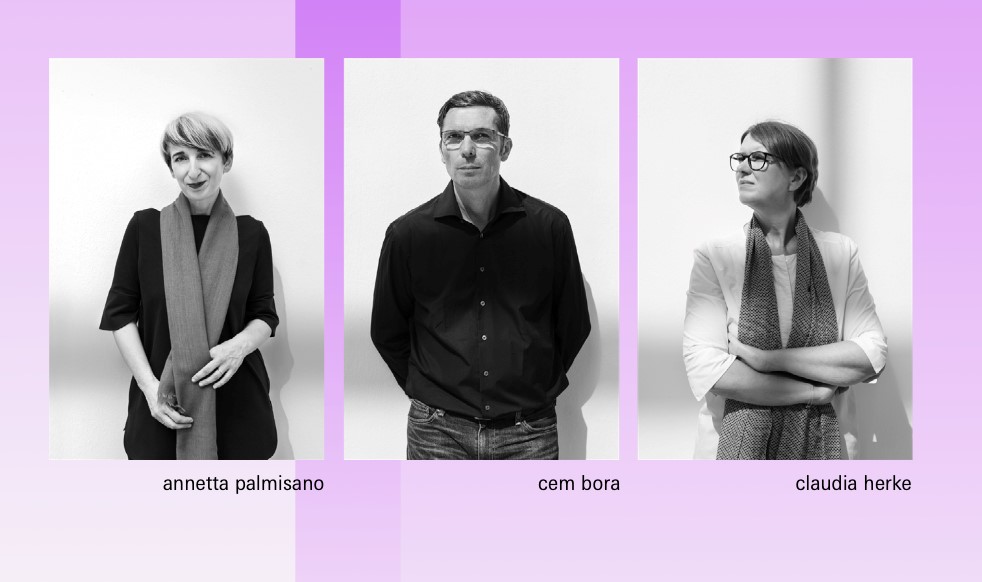

You derive your trend forecasts from current trends in fashion, architecture and product design. What was special about your research for Ambiente Trends 23+?
The classic search for new products and reliable trends has now largely moved online and thus become much more intensive. In addition, we have broadened our view and are now increasingly looking at start-ups, young design studios and ateliers. Design experiments, production techniques, material research and products that are developed independently of the large furniture and product industry are exciting. A look at design schools and graduation projects provides fresh impulses, as do galleries whose exhibition concepts between art and design have brought us to new names. In addition, we are increasingly looking at the familiar, at design icons and at craftsmanship. At the moment, many designers are focusing on tradition, longevity and established trends. The enduring is coming back into focus and being reinterpreted.
For a long time, the hype about novelties set the agenda. That seems to be changing. Will the pandemic and the sustainability debate bring about a change in consumer behaviour?
We have been experiencing for a long time that a trend can often develop over years into something permanent, lasting. Even before the pandemic, these longer-term aspects in design interested us more than pure novelty hype. A good example of this is the topic of sustainability. In the early days, sustainable products were mainly found in small design labels or in student work. Today, more and more large companies are showing pioneering concepts that make a general rethink visible. These include, for example, the production of sustainable materials obtained from textile production waste or the development towards recyclable production methods and take-back programmes. In the long term, the vision of producing design without waste will remain a concern. It will also continue to be a matter of raising the awareness of buyers not only for less, but also for better things. And local will certainly take on a new meaning. At least these are our hopes that there can be a positive change – in addition to all the bad.
You stage the Ambiente Trends both in the collages and in the large presentation with existing products. How does the path from the trend forecast to the selected exhibit work for you?
We develop style worlds based on colours and thematic focal points. In our work, we investigate and analyse future consumer behaviour and sound out which inspiring designs and brands are currently setting the tone. If certain developments in surfaces, designs and shapes accumulate, a trend statement manifests itself. Style becomes trend. As a result, we recommend certain products.
Trend presentation at Ambiente 2023
From 3 to 7 February 2023, Ambiente – the world’s new-products and trend hotspot in Frankfurt – will finally take place again. The Ambiente Trends will also finally be live again, in the large presentation as usual, but at the new central location in the foyer of hall 4.1. Also new is the thematic expansion of trends around New Work and the modern workplace. The elaborately designed area offers both trade visitors and exhibitors valuable inspiration. On top of that, the creators of the trends invite you to dive even deeper into the trend worlds in daily lectures.
All further information on Ambiente Trends 23+ and the special presentation is available here.

